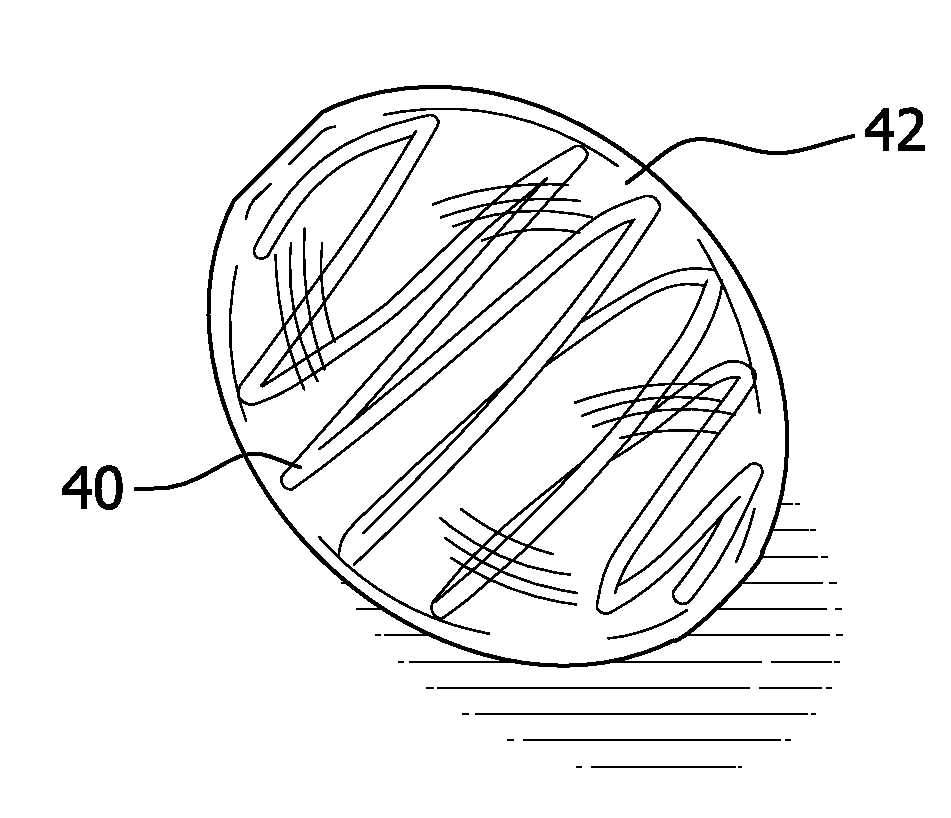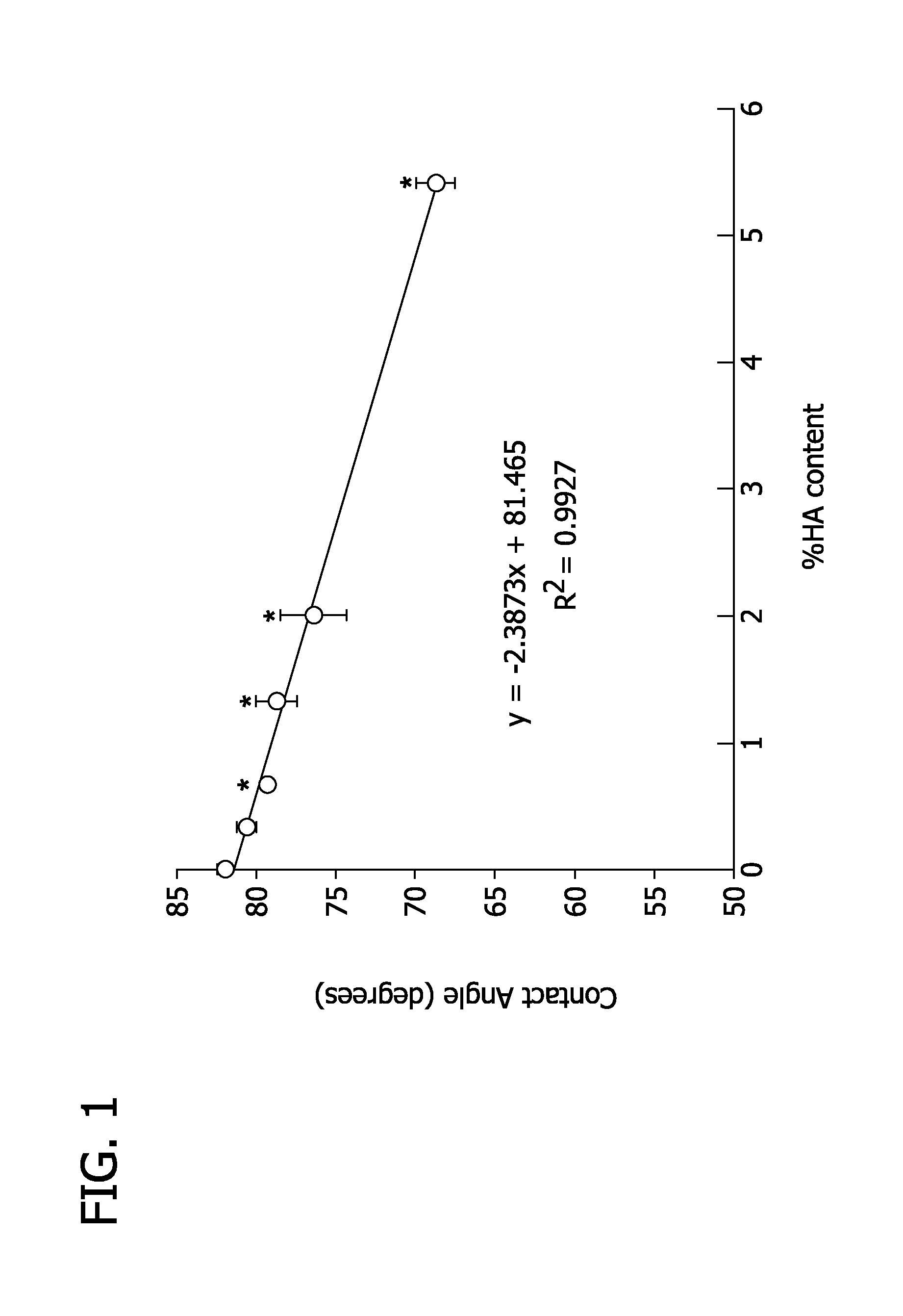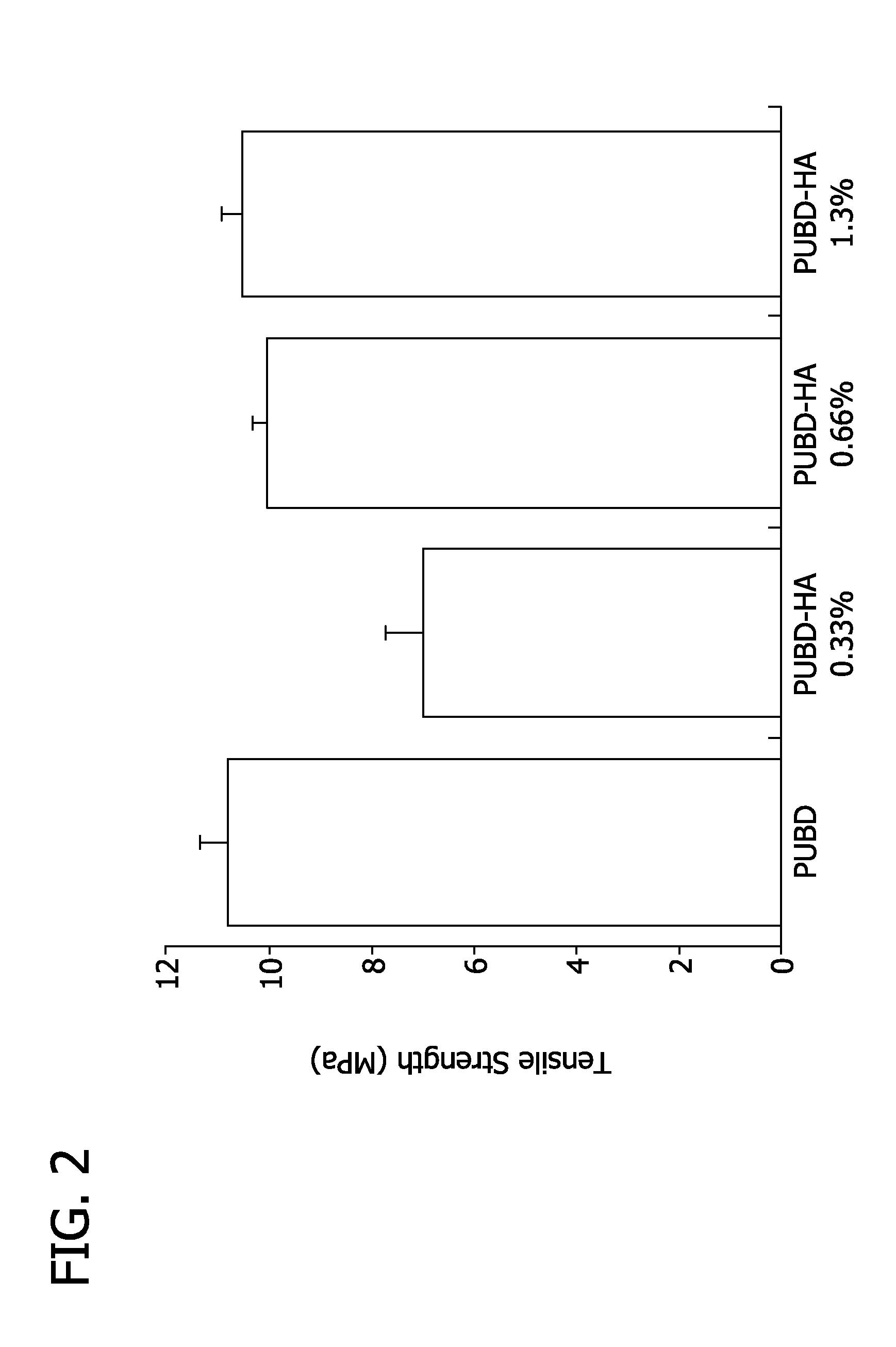Aneurysm occlusion device containing bioactive and biocompatible copolymer shell and biocompatible metallic frame member
a technology of aneurysm and occlusion device, which is applied in the direction of prosthesis, dilators, medical preparations, etc., can solve the problems of sah, a devastating condition with high morbidity and mortality, and the use of coils is accompanied by numerous complications
- Summary
- Abstract
- Description
- Claims
- Application Information
AI Technical Summary
Benefits of technology
Problems solved by technology
Method used
Image
Examples
example 1
[0098]As shown in FIG. 5, a polyurethane prepolymer is synthesized and reacted with the cetylpyridinium salt of hyaluronic acid to make the PUBD-HA copolymer. Thin, transparent films of PUBD are synthesized by solvent casting, whereby the films possess excellent mechanical strength (5.3-111 MPa elastic modulus) and elasticity (>1000% elongation). The biocompatibility and bioactivity of PUBD-HA is confirmed using in vitro cell culture tests. Endothelial cells and fibroblasts are cultured upon PUBD-HA or PUBD for time periods up to 5 days. Using conventional assays, the cultures are used to assess cell viability and number.
[0099]Hyaluronic Acid Degradation. Native hyaluronic acid has a very high molecular weight (˜4 MDa). Hyaluronic acid that is lower in molecular weight is easier to handle (with respect to dissolution), and it stimulates endothelialization and wound healing. The following steps were taken to partially degrade hyaluronic acid creating low molecular weight hyaluronic a...
example 2
[0113]Starting materials include heparin sodium salt having MW=16,000 (Sigma).
[0114]Synthesis of Hep-DDA. Heparin is soluble in H2O Synthesis of polyurethane-heparin copolymers (PU-Hep) involves dissolving heparin in organic solvent(s) such as dimethyl formamide (DMF) or tetrahydrofuran (THF). The following method describes a simple ion exchange reaction that replaces the sodium salt of heparin with a dimethyldioctadecylammonium salt of heparin, whereby the latter is soluble in DMF.
[0115]Starting materials include un-degraded and degraded heparin (of any molecular weight), dimethyldioctadecylammonium chloride (DDAC) (Fluka) and anhydrous N,N-dimethylformamide (DMF)(Aldrich).
[0116]Methods. A 0.48% (w / v) solution of DDAC in 2 ml diH2O was added dropwise to 2 ml of sodium heparin solution, forming a white precipitate. The precipitate was separated from the solution by centrifugation. After removing the supernatant, the precipitate was washed using 2 ml diH2O and centrifuged, whereby th...
example 3
[0121]In this Example, aneurysm occlusion was tested using a model aneurysm system in which an occlusion mechanism was inserted. The mechanism was either: (1) a biocompatible metallic frame member inserted into a polymeric member; or (2) a liquid embolic agent injected into a polymeric material and allowed to solidify. Once the polymeric member including either the biocompatible frame member or the liquid embolic agent was introduced into the aneurysm model, the amount of occlusion was determined.
[0122]In vitro models of aneurysms were prepared using a silicone polymeric system (See, Schmitz-Rode T, et al., Invest Radiol, 1999, 34(4): 317-321). Aneurysm models were prepared for testing having neck sizes that range from small (4.5 millimeters) to medium (5.5 millimeters) to large (7 millimeters). Each of the three sizes was tested at three different vascular flow rates: 49 mL / min, 116 mL / min, and 208 mL / min. The fluid used to create the desired vascular flow rates was a fluid with a ...
PUM
| Property | Measurement | Unit |
|---|---|---|
| thickness | aaaaa | aaaaa |
| wall thickness | aaaaa | aaaaa |
| elongation | aaaaa | aaaaa |
Abstract
Description
Claims
Application Information
 Login to View More
Login to View More - R&D
- Intellectual Property
- Life Sciences
- Materials
- Tech Scout
- Unparalleled Data Quality
- Higher Quality Content
- 60% Fewer Hallucinations
Browse by: Latest US Patents, China's latest patents, Technical Efficacy Thesaurus, Application Domain, Technology Topic, Popular Technical Reports.
© 2025 PatSnap. All rights reserved.Legal|Privacy policy|Modern Slavery Act Transparency Statement|Sitemap|About US| Contact US: help@patsnap.com



